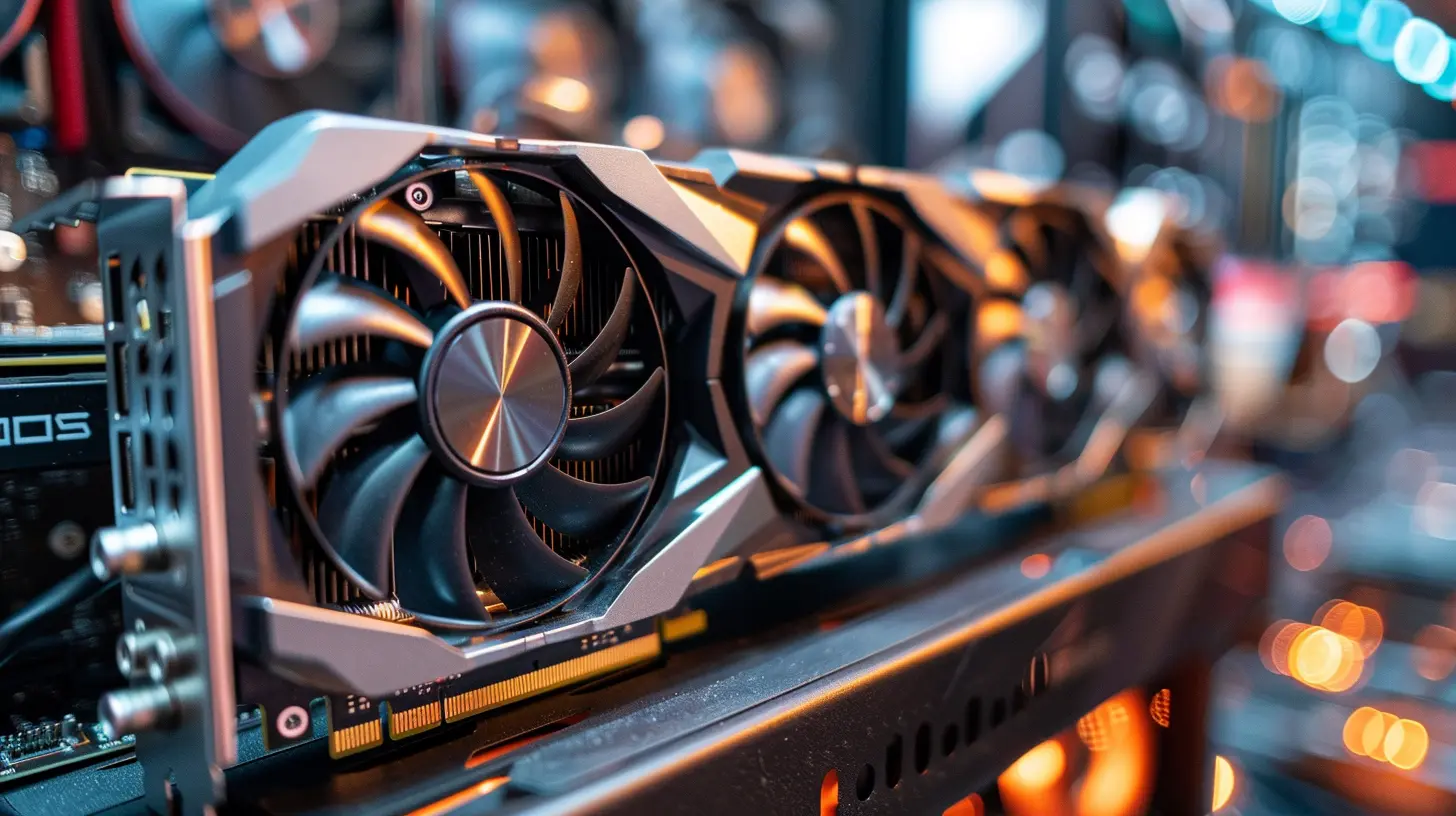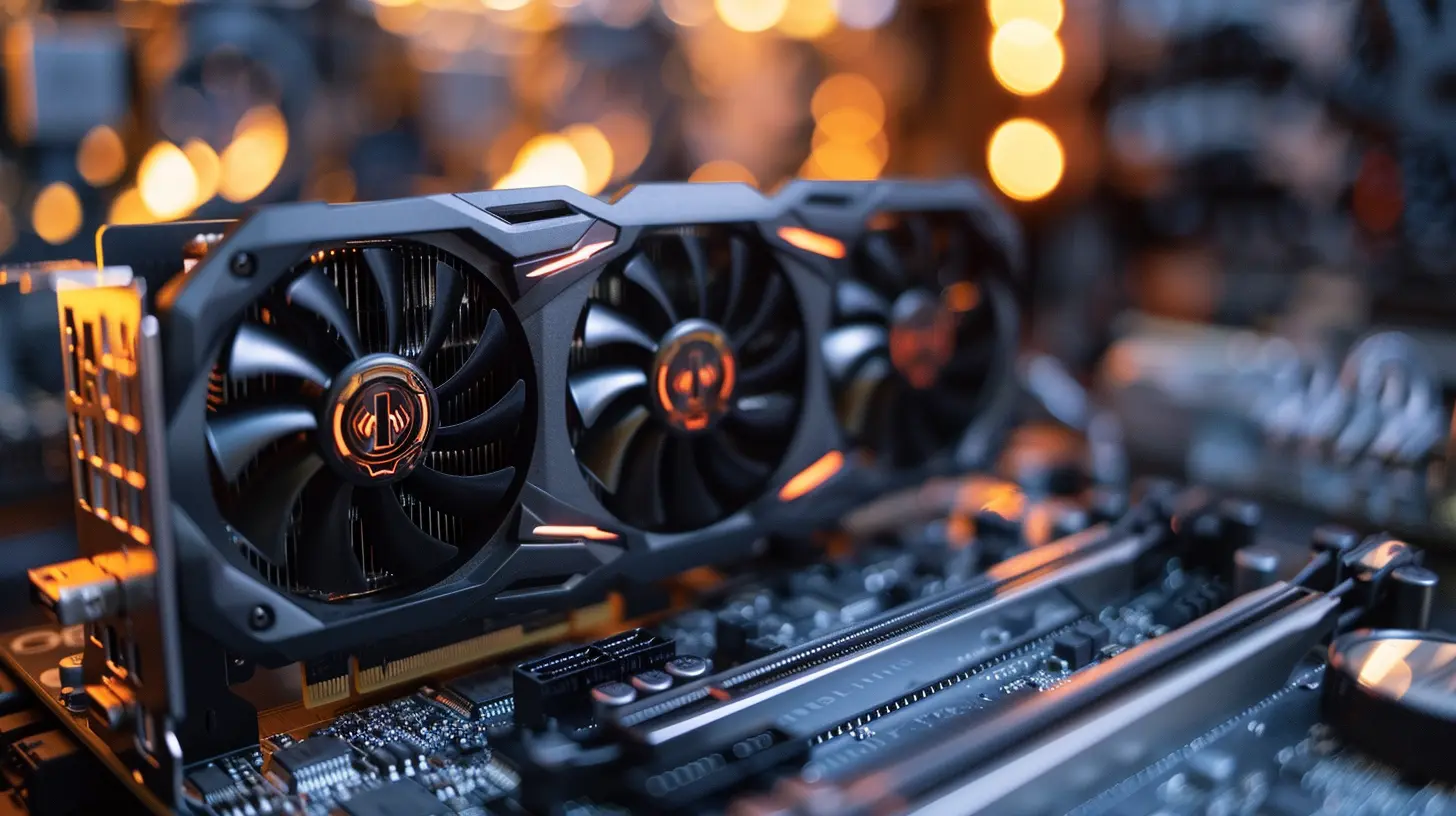Exploring the Evolution of Graphics Cards: From Early GPUs to Today
16 November 2025
If you've ever marveled at ultra-realistic video game graphics or watched a stunning 3D animation, you've got graphics cards to thank. These little slabs of silicon, metal, and magic have come a long way in a relatively short time. From the clunky pixel-pushers of the 1980s to the ray-tracing beasts of today, the journey of graphics cards—or GPUs (Graphics Processing Units)—has been nothing short of a technological rollercoaster.
So, let’s break it down and track this fascinating evolution, step by step, generation by generation. Whether you're a curious gamer, a budding PC builder, or just someone intrigued by the tech powering your screen, you're in the right place.
🕰️ Back in the Day: The Humble Beginnings of Graphics Cards
Let’s rewind to the late '70s and '80s. Back then, computers weren’t exactly visual dynamos. Graphics were basic. Think green text on a black screen or some chunky pixels trying to resemble a spaceship.The earliest "graphics cards" weren’t really cards at all. They were just integrated display chips built into the motherboard. Their job? Display simple images and text. That’s it. The idea of handling 3D graphics? Still science fiction.
🔸 Enter the Monochrome Display Adapter (MDA)
IBM introduced the Monochrome Display Adapter in 1981, which was capable of text-only output. No colors, no graphics. Sounds boring by today’s standards, right? But at the time, it was revolutionary because it was consistent and reliable.🔸 CGA, EGA, and VGA: A New Era Dawns
Not long after, we saw IBM’s Color Graphics Adapter (CGA) in 1981, followed by the Enhanced Graphics Adapter (EGA) in 1984, and then Video Graphics Array (VGA) in 1987.- CGA brought color into the picture (literally) with 4 colors at 320×200 resolution.
- EGA upgraded that to 16 colors at 640×350.
- VGA—the real game-changer—offered 256 colors at once from a palette of 262,144, and it stuck around as a standard for years.
But here’s the thing: none of these had “graphics cards” in the way we think of them now. They still leaned heavily on the CPU to do most of the heavy lifting.
💾 The Birth of the GPU: Letting the Graphics Chip Take Charge
The 1990s were wild for computer graphics. This is when dedicated graphics cards first began to appear. They started off simple but rapidly became more capable.🎮 Enter 3D Gaming
Video games were getting more complex, with 3D environments becoming the next big thing. Titles like Quake and Doom were pushing the limits of what hardware could do.That’s where companies like 3dfx Interactive stepped in. Their Voodoo Graphics card, released in 1996, was among the first consumer-level 3D accelerators.
Here’s why Voodoo cards were special:
- Offloaded 3D rendering from the CPU (freeing it up for other tasks)
- Supported real-time lighting and shading effects
- Opened the doors to immersive gaming experiences
And just like that, gaming changed forever.
💡 The Rise of Nvidia and ATI
Two names started making big moves in this space: Nvidia and ATI (later acquired by AMD).🔸 Nvidia’s Game-Changer: GeForce 256
In 1999, Nvidia introduced the GeForce 256, which they boldly dubbed the world’s first GPU. It could process 10 million polygons per second—a massive upgrade—and had features like hardware transform and lighting (T&L), which were groundbreaking back then.This wasn’t just a video card anymore. It was a full-blown graphics processing unit. It shifted the workload from the CPU to the GPU, literally putting the graphics in "graphics card."
🔸 ATI Strikes Back
ATI (Canadian tech pride!) wasn’t far behind. Their Radeon series came in swinging with powerful competition that pushed the innovation race forward. It was great for consumers, as both companies kept one-upping each other.
🧠 Shaders, Pipelines, and Pixel Pushing
In the early 2000s, the GPU game got nerdier—but in the best way.GPUs started incorporating programmable shaders, which allowed developers to write custom code to control the color, texture, and lighting of pixels, vertices, and geometry. This opened up creative floodgates for game developers and digital artists alike.
We also saw the separation of vertex and pixel shaders, meaning the GPU could handle different kinds of graphical data more efficiently.
It’s like giving your graphics card a mini-brain—it could now think, not just draw.
🖥️ Parallel Processing Powerhouses
By the 2010s, GPUs weren’t just for gaming.With their ability to handle thousands of tasks at once, GPUs became rockstars in industries like:
- AI and Machine Learning
- Video Rendering
- Scientific Simulations
- Cryptocurrency Mining
In fact, for some tasks, even high-end CPUs couldn’t touch what a GPU could do in parallel. This is where the concept of GPGPU (General-Purpose computing on GPUs) really started gaining traction.
🌀 Real-Time Ray Tracing: Bringing Movies to Games
Let’s fast forward to 2018, when Nvidia dropped the jaw-dropping RTX 20 series GPUs. Why was this a big deal?Ray tracing.
Traditionally used in Hollywood CGI and film effects, ray tracing simulates how light behaves in the real world—bouncing, refracting, creating shadows and reflections. It’s crazy resource-heavy, which is why it hadn’t made it into real-time applications like games.
But with RTX, ray tracing went live.
Sure, it took a lot of processing power (and cash), but it looked phenomenal. Suddenly, games like Cyberpunk 2077 and Minecraft were cinematic experiences.
AMD followed up with their own RDNA 2 architecture and ray-tracing capabilities in GPUs like the RX 6000 series.
🌐 DLSS, FSR & AI-Driven Graphics
Along with ray tracing came performance-enhancing tricks. Rendering a game in 4K with ray tracing? That’s hard. So, what did GPU makers do?They got smart—literally.
- Nvidia created DLSS (Deep Learning Super Sampling): It renders scenes at a lower resolution then uses AI to upscale them, maintaining visual integrity.
- AMD countered with FSR (FidelityFX Super Resolution): Not AI-powered (yet), but effective and open-source.
This means smoother gameplay without sacrificing visuals. It's like a magic wand for frame rates.
🧊 The Cooling Revolution
As GPUs got more powerful, they also got hotter. Remember, these things are essentially power-hungry monsters doing millions of calculations per second.Enter a new era of thermal management:
- Larger fans and triple-slot coolers
- Liquid cooling systems
- Aggressive thermal throttling
- Vapor chambers and heat pipes
These kept GPUs from cooking themselves like a toaster on overdrive.
💸 The Supply Chain Woes & GPU Scalping
Alright, let’s talk about the elephant in the room.From 2020 onwards, the world saw an unprecedented demand for GPUs—thanks to:
- Remote work & gaming spikes
- Cryptomining booms
- Global chip shortages
- Scalpers using bots to scoop up stock
For a while, getting a new graphics card felt like hunting for a unicorn. Prices skyrocketed, and availability hit rock bottom. It was frustrating, no doubt. But thankfully, the market is slowly stabilizing.
🧮 The Future: What’s Next for GPUs?
So, where do we go from here? What’s the next evolution?Let’s speculate for a second:
- Smaller, more efficient architectures (think 3nm process nodes)
- Even better AI integration
- Cloud-based GPU rendering for on-demand power
- Photorealistic real-time rendering
- AR and VR optimization
- Quantum computing applications? Who knows!
One thing's for sure: GPUs are no longer just for graphics—they're the muscle behind some of the most exciting progress in tech today.
🎯 Final Thoughts: More Than Just Pixels
It’s crazy to think how far we've come—from basic monochrome outputs to near-photorealistic, real-time graphic renderings powered by AI. GPUs are arguably one of the most critical components in modern computing, touching everything from entertainment to medicine, science, and beyond.So next time you fire up your favorite game or stream in high-def clarity, take a second to appreciate the tiny powerhouse inside your device. It’s more than a card—it's decades of innovation packed into a few square inches.
all images in this post were generated using AI tools
Category:
Graphics CardsAuthor:

Pierre McCord

